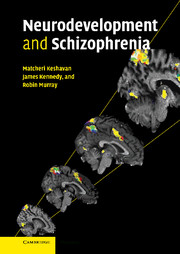Book contents
- Frontmatter
- Contents
- List of contributors
- Foreword
- Preface
- Part I Basic aspects
- 1 Genes and brain development
- 2 Brain development in healthy children and adolescents: magnetic resonance imaging studies
- 3 Cognitive development: functional magnetic resonance imaging studies
- 4 Cognitive development in adolescence: cerebral underpinnings, neural trajectories, and the impact of aberrations
- 5 Brain plasticity and long-term function after early cerebral insult: the example of very preterm birth
- Part II Etiological factors
- Part III Pathophysiology
- Part IV Clinical implications
- Index
- Plate section
- References
1 - Genes and brain development
Published online by Cambridge University Press: 04 August 2010
- Frontmatter
- Contents
- List of contributors
- Foreword
- Preface
- Part I Basic aspects
- 1 Genes and brain development
- 2 Brain development in healthy children and adolescents: magnetic resonance imaging studies
- 3 Cognitive development: functional magnetic resonance imaging studies
- 4 Cognitive development in adolescence: cerebral underpinnings, neural trajectories, and the impact of aberrations
- 5 Brain plasticity and long-term function after early cerebral insult: the example of very preterm birth
- Part II Etiological factors
- Part III Pathophysiology
- Part IV Clinical implications
- Index
- Plate section
- References
Summary
Keywords
- Type
- Chapter
- Information
- Neurodevelopment and Schizophrenia , pp. 3 - 34Publisher: Cambridge University PressPrint publication year: 2004



